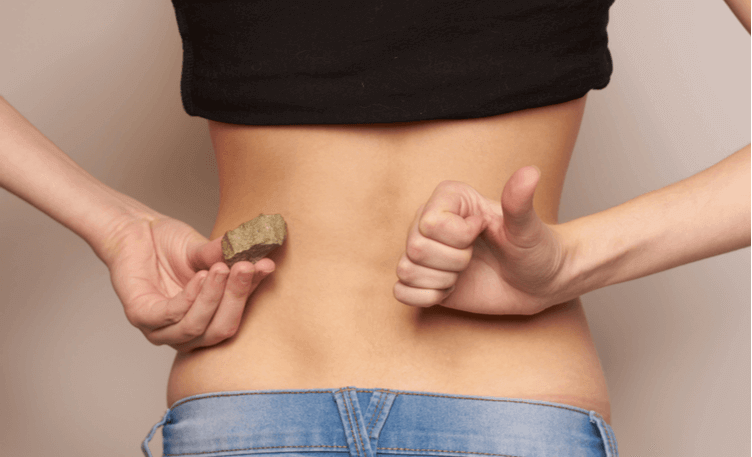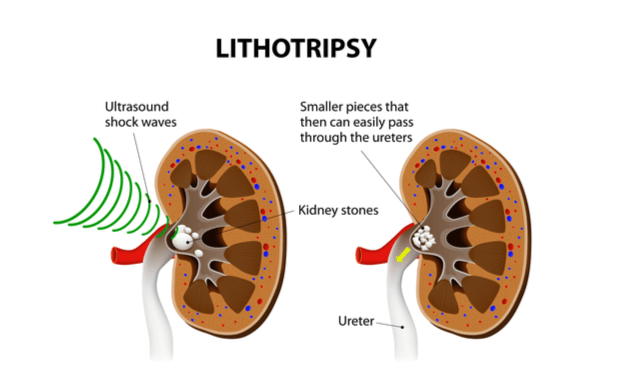
What To Expect When You Need A Kidney Stone Surgery
Kidney stone pain is one of the worst, as recorded on the Pain Scales used by medical professionals. In some cases, a simple treatment of water and pain medication is good enough but there are times when you need some surgical intervention.
Kidney stone surgery has made many advances and this article will help you understand what to expect in case of a surgery.
What Are Kidney Stones?

They are small crystals that bind to make ‘stones’. These are formed when high levels of certain minerals in your urine start to crystallize in your kidneys. The most commonly found mineral is calcium but stones can also be caused by other minerals like phosphate, oxalates, urate and cysteine. You realise they exist only when the stones migrate from your kidneys to your ureters and cause pain.
These stones can be caused by multiple reasons:
- Existing medical conditions like gout, obesity, urinary tract infections
- Poor lifestyle, of which less water consumption ranks very high
- Reaction to medications or supplements
How Are They Treated?
Some kidney stones often pass on their own without treatment – just drink a lot of water. Advanced medical intervention like a course of medications or surgery, is decided based on the size of the stones, intensity of the pain and location of the stones.
What Are The Surgical Options?
There are 3 main options and a fourth one, the Open Surgery is for rare, complex cases. All of them involve breaking up the stones into smaller pieces and then ejecting them from your body.
1. Shock Wave Lithotripsy (SWL)
What is it: Sounds scary but the treatment is far from it. It is the one used most commonly and manages to cure 50% of all Kidney stone patients. SWL is non-invasive, targets small to medium sized stones in your kidneys and takes roughly an hour at the hospital.
How does it work: All you do is take a pain medicine, lie down on a table and the doctor uses a specialised machine to aim high-energy shock waves at your stones. These waves break up the stones into small pieces, that you might naturally pass in your urine OR the doctor might put a tube into your ureter.
What happens afterwards: After the procedure, you might feel some cramps or blood might pass in your urine but that’s temporary. You can go home the same day and rest.
2. Ureteroscopy

What is it: This process is used for stones in the kidneys and ureters (little pipes that carry urine from kidney to bladder). A thin scope is used to find and remove stones. You will sleep through this process and again, no cuts are made.
How does it work: While you sleep, a flexible scope is inserted into the bladder. Once the doctor has identified and analysed the stones, he will pass a very tiny wire basket to grab the stone and pull it out. If the stone is too large or stuck in the ureter, it can be fragmented with a laser or using wave/electrical energy lithotripsy.
What happens afterwards: You might notice some bleeding in the urine and that is normal. In some cases, a temporary stent is placed which is removed within a week.
3. Percutaneous Nephrolithotomy or Nephrolithotripsy
What is it: Percutaneous means ‘related to skin’ and this procedure is minimally invasive, where a small incision is made in the skin of your back. It is used for larger stones (2cms or more) or in case the previous two procedures are unable to break the stones.
How does it work: You will be administered general anaesthesia and the doctor will make a small incision, insert a scope from the back, to access the stones and break them up with either a tube or high intensity sound waves. The procedure takes anything between 30 to 60 minutes.
What happens afterwards: Once you wake up, you will stay in the hospital for a day or two, with a follow-up meeting with the doctor after a week or 10 days.
4. Open Surgery
Rarely done and only in cases of extreme pain, very large stone or if the stone is not allowing urine to pass through. After giving anaesthesia, the surgeon will make a cut to reach your kidney and remove the stone directly. A stent will be placed temporarily, to drain the urine. You will stay in the hospital for a few days and the body will heal fully after 4 to 6 weeks.
Care After Surgery

While most of the procedures are non- or minimally invasive, expect to take some pain medication, a dose of antibiotics to avoid infections and a stent in some cases for a few days, to drain urine.
Also follow some basic rules of care and you should be fine in no time:
- Walk around and do light physical activity but do not exert
- Make sure you take the follow-up medications as instructed by the doctor
- Eat healthy - lots of fruits and vegetables, to produce less acid in your body
- Last and the most important, promise yourself that you will have at least 8 glasses of water every day, for the rest of your life.


